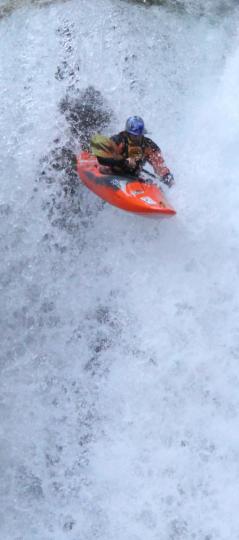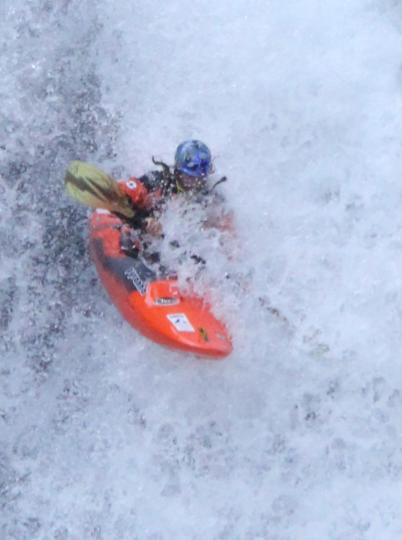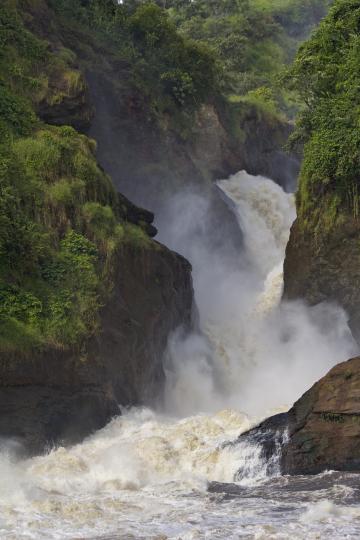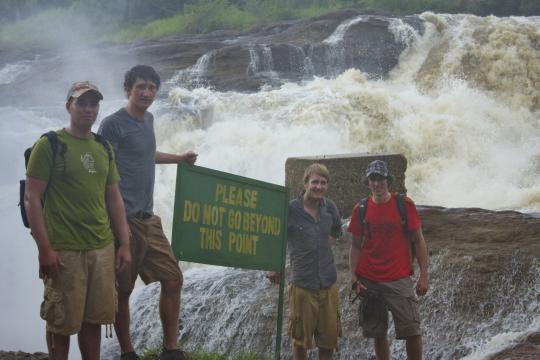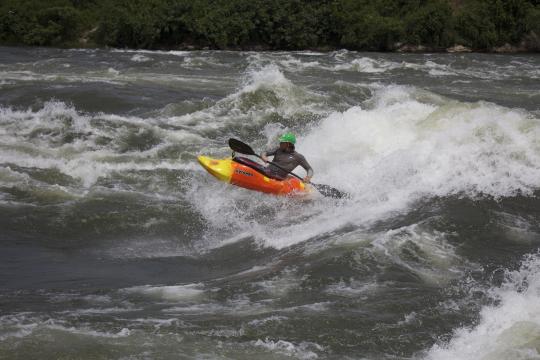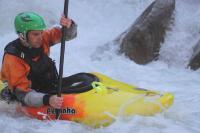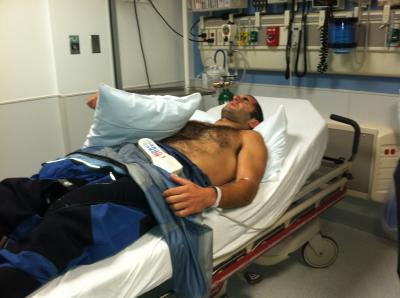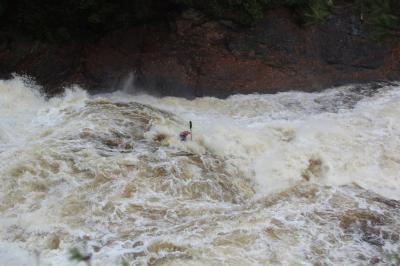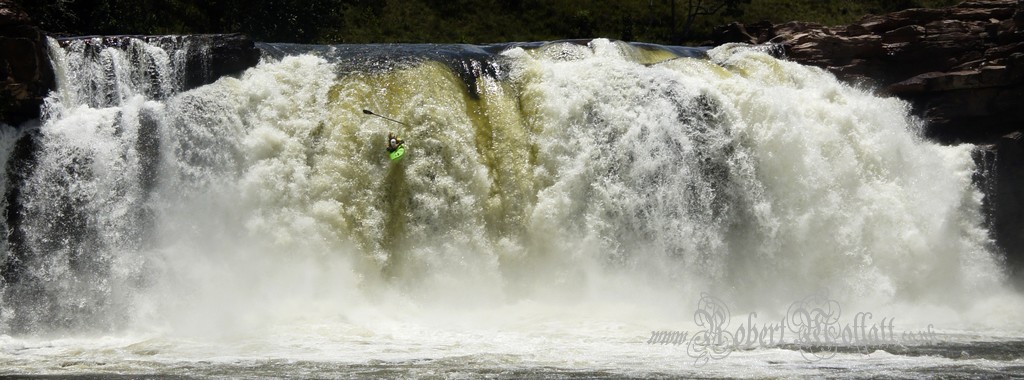It always starts with a journey
Our trip started in Nottingham, where Tom and I live. A kit list was made and we left at midday on Friday. A quick drive and we arrived in London at the White Water Canoe Centre where Pete Scutt works. After an afternoon in the shop we headed to the local pub beside the Shepperton Slalom Site followed by a curry.
The next morning we were back in the shop watching the rugby, myself very over-excited about the coming week and not really knowing what to do with myself till 4:00. However, the time did eventually come and we began our trip to Dover and the drive to Europe, our destination, Sickline!
We arrived on Sunday afternoon with sore backs from the journey. After a quick inspection of the course we were changed and raring to go. This was the first time I had seen the Wellerbrucke section at race level, and to no surprise it still looked rather big. With help from all the GB guys here I had my line set in my head as well as following Graham, Pete and Tom down.
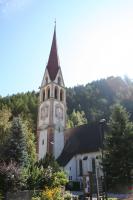
My first run was pretty clean, and filled me with confidence, I went straight back up for another few runs. We all got off the water buzzing with how we paddled. No huge beat-downs were taken and most of us felt really positive about the course. We then got some food and headed to Crazy Eddies.
Crazy Eddies
Crazy Eddies is possibly one of the coolest most random places I have ever been to. It is an old raft centre, where many raft guides still live. It’s comprised of a central building with a full industrial kitchen, of which only a small electric oven hob combo, and a fridge works. Another room with another walk in style industrial fridge is, again not working, and a table where we eat, chill and most importantly drink tea.
There is also an assortment of old train carriages, which are very Harry Potter style. You can even imagine the dementors coming down the corridor. These carriages have doors to each, converted “bedrooms†which have fold out bunk beds. The window seals are perished and doors squeal but still I really enjoy sleeping there for the quirkiness of the whole place.
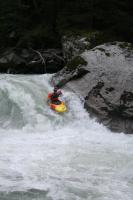
Middle Oetz and back to the Venter Ache
In the morning we headed up to run the Middle Oetz with Seth as our guide. It was a really fun run, with nothing too difficult at this water level. It certainly kept you busy though as the rock-gardens were super long and tight. After this we went up the valley to the Venter Ache, my favourite run to date. Unfortunately I had only ever run it in spate, and at normal water levels it wasn’t anything overly special. It was still great to paddle through the deep gorges in the sunshine, and there were enough features to make it enjoyable and a fun run.
We finished the day back on the Race course on the Oetz with a few quick runs down, and an unfortunate snapping of my paddle just above the two largest drops on the course. A bit of C1 down the drops had me on a nice clean line though. Thankfully.
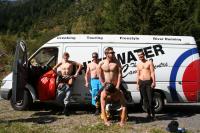
Race Prep is Important…. But so is relaxing
After a having to abandon a plan to run the Risbach we had to decide what to do with the day. The thought of a day just on the race course was not so appealing, therefore we went to the local bike hire, and rented some Giant DH and free-ride bikes. I had not been on a DH bike for a few years, since I sold mine. We got the ski lift up, and had our first run down, a definite walking track. It was super steep and not really wide enough for a bike. We ended up finding some single track road, then nailing it down the mountain roads overtaking cars. The second run down we found some fire road tack where even the open corners seemed tight due to a lack of berms. Towards the end we found a nice little section of DH which really got the adrenaline pumping. A few minor crashes were had within the group but nothing major. The day ended, again with a few runs down the race course.
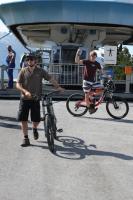
The reality of racing
So it came to Thursday, as I awoke the race nerves came apparent. It was a strange feeling knowing that this was actually a world champs. We had a short paddle in the morning including a run down the Infamous upper Wellerbrucke, which is one rather scary dirty run. The evening had some nice lines going down from all the GB paddlers. We had a race meal that evening which consisted of numerous pieces of meat and a few potatoes. I got an early night and started psyching myself up for the next day.
Qualification
The prep leading up to the race for me was pretty thorough. I had not done much training on the qualification course due to the top being so technical, a mistake on my part as I had not understood how challenging qualification was going to be. Anyway, with advice from Pete Scutt, Craig Aires and Rob Harris, I thought I knew my lines well. I waited in queue for the start, eagerly awaiting my time to climb down the steep bank to the small eddy by the start beam. I sprinted off the start, and as planned hit the hump of the first drop nailing the boof and landing on the left pile, I sprinted towards champion’s killer. I hit the right boof and landed perfectly and powered through the small gap below. At this point I had thought the hard work was over and it was just keeping to the “easy lines†however through the middle section I made contact with a few rocks which slowed me down significantly. My time had me 3rd in 1st qualification.
Second qualification was very much the same again hitting the same rock. I rushed up after my times to watch the other GB competitors. Tom Wakeling, one of the fastest GB paddlers unfortunately backlooped on champion’s killer therefore this year did not have the chance to race in the final. Congrats to Pete and Anton who also made it through along with myself.
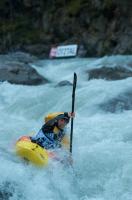
Finals day!
The moment I had been waiting for, sitting at the top of a 6 meter seal slide looking down upon the swirling waters below. A cameraman was placed just where I wanted to be at the top of the slide, which meant I had to just hope that I would be ok sliding further right. The light went green and I shifted my weight over the edge, the boat began to slowly tilt, then speed down the rock towards the small yellow plank. I shot off down the river as my hull boofed nicely off the flat surface below. I knew this was the first key part to my race. I then picked up the pace through the first section flowing with the S around a rock then a hole, a quick boof and I was on to the flat section in the middle of the course. I sprinted towards the compulsory left channel. I hit it with a nice line and then paddled for the middle route where you come all too near to the undercut that has claimed so many peoples runs. I got the double boof and then sprinted towards the second to last drop. I hit the hump and again, as in quals landed on the flow and gripped it. On approach to champion’s killer I was just praying that it went to plan. Unfortunately it did not and I backlooped. I finished 8 seconds behind the Russian I was against, who went on to win the quarter final stage.
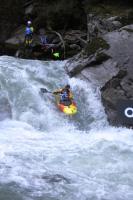
I finished 34th, very happy with my performance in the race. I can’t wait after another hard years training to go out again and hopefully get a better seeding!
Thanks for reading,
David




